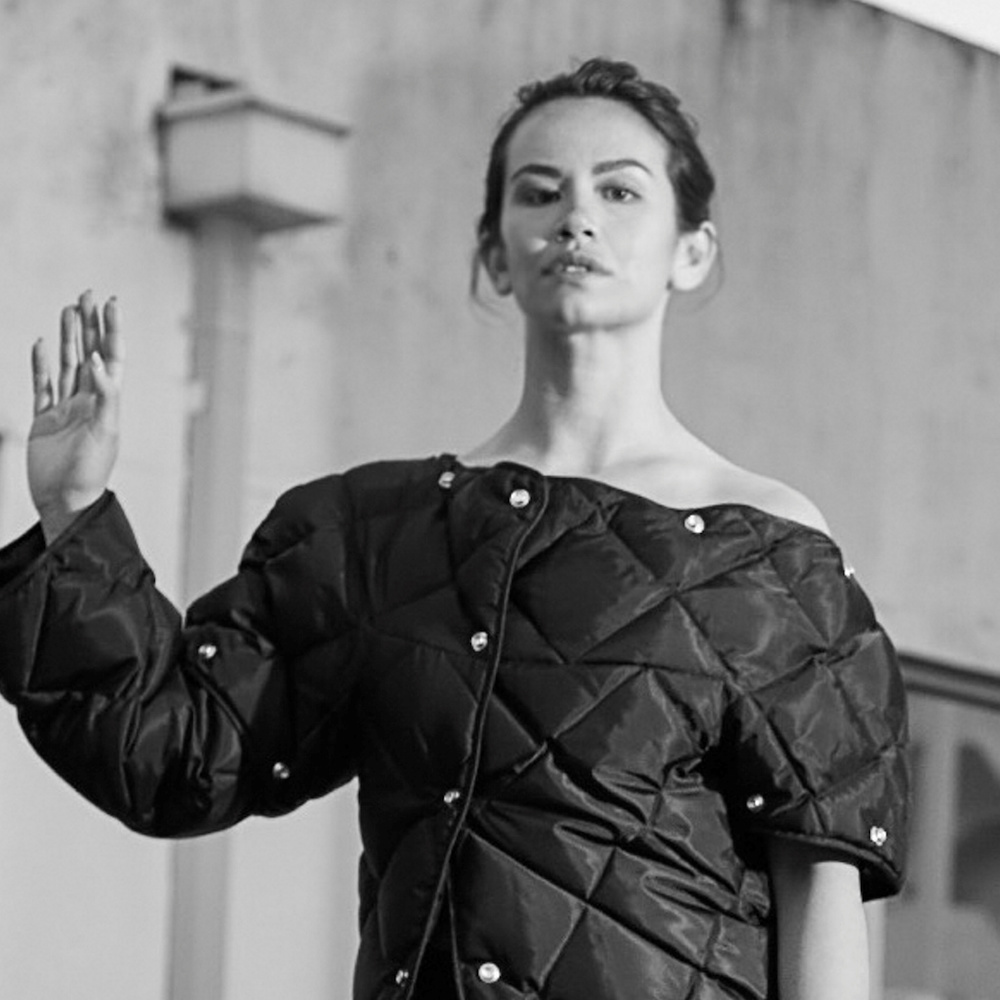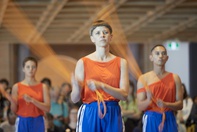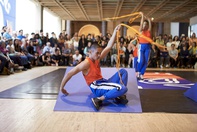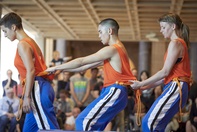Amrita Hepi
Sydney. Bundjulung, South-East
2019
Displayed 2019 at Art Gallery of New South Wales

Amrita Hepi
Amrita Hepi
Born 1989, Townsville, Queensland. Lives and works Sydney. Bundjulung, South-East region, Ngapuhi, New Zealand
Amrita Hepi is a First Nations choreographer and dancer from Bundjulung and Ngapuhi territories. Her mission as an artist is to push the barriers of intersectionality and make work that garners multiple access points through allegories drawn from the body and objects. An artist with a broad following and reach, her work has taken various forms (film, performance, sculpture, text, lecture, participatory installation) but always begins from working with the body as a point of archive, memory and resistance.
Photograph: Amelia J. Dowd
Artist text
by Winnie Dunn
Angavaivai is the Tongan word for being tender. It translates to something like ‘being soft-hearted in a hard body’. It’s a word I’ve taken to describe the intricacies of Amrita Hepi’s The Tender (2019) for The National 2019. I first heard about The Tender when I met with Amrita, a Bundjulung and Ngāpuhi dancer, at Cabramatta Station for dinner. It was freezing cold, even for August, and I remember Amrita sitting at the bus stop in a dark orange coat and flash-as Nikes. Between us were some Pasifika boys in school uniform chucking around a basketball and old Viet ladies dragging trolleys full of leafy vegetables.
Over phở and coffee, Amrita and I talk through talanoa, through korero, through yarning – our intersectional traditions of oral storytelling. It’s the only way she can tell me what The Tender is really about. ‘Build and build and build and build, and then tension, and then finally release. Especially for us Black and Brown folk,’ she says.
The Tender uses rope and the act of skipping to form choreographic methodology. Ten different performers move through gestures and obstacles in relation to pressure; its build, its rhythm and its release. The dancers, of various genders and ethnicities, buck, skip, embrace and relinquish through the rope and through each other. The Tender unfolds as a progression of encounters between bodies, colours, sounds, movements, lights and architectures. I hear the thap, thap, thap, thap of rope hitting concrete while Amrita speaks. It reminds me of the hollow taps of beaten ngatu, a type of Tongan mat, which my nana would work on in the front lawn of our houso in Miller, South-West Sydney, her afro moving back and forth like a black cloud.
Amrita shows me one of her research pictures for The Tender. Zachary Lopez, an internationally renowned dancer and one of Hepi’s performers, is wearing a bright yellow silk top and twirling a skipping rope above his head. His skin is the colour of sand against a dark blue backdrop and the skipping rope, captured midair, reminds me of angel wings. Now I can see the way that a physical rope often appears in metaphors of restraint and resistance: whip, noose, knot, tying and binding. A rope can be used either to control someone or to secure against outward disturbances. Such a relationship shows how Black and Brown bodies absorb stressors and redistribute hardness and softness and restraint and security as coexisting expressions.
The Tender is a reminder that the existence of Indigenous peoples, of Black and Brown people, is a continual process of building, weaving, stressing, tensing, restraining, resisting and releasing.
I walked Amrita back to Cabramatta Station. On the way, she took a picture of a side- street café called Happy Cup. Its sign was made completely out of rope. For all the times I’ve been to Cabra, this is the first time I’ve noticed it. I wonder if the sign came into existence just then ... just for her ... just for us.
Amrita Hepi
6min
Amrita Hepi on her performance work


